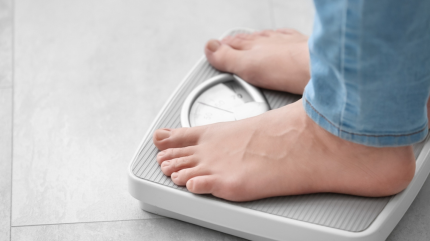
Ascletis has announced its oral glucagon-like peptide-1 receptor agonist (GLP-1RA) has achieved early weight loss in a Phase Ib trial and is now preparing to progress to a Phase IIa study.
The China-based biotech’s once-daily tablet ASC30 demonstrated a placebo-adjusted mean body weight reduction from baseline of up to 6.5% after four weeks of treatment.
The company’s stock, listed on the Hong Kong Stock Exchange (HKSE) has risen 4.55% today following the announcement. Despite this rise, the stock price has still not yet recovered from the hit it took after Donald Trump announced sweeping global tariffs on 2 April, with the company’s stock continuing to fall as both China and the US continued to respond with reciprocal tariffs.
The update follows a turbulent week in the oral obesity drug space, highlighted by a surge in Eli Lilly’s stock after the company reported successful data from the first of seven anticipated Phase III readouts in 2025 for its oral GLP-1RA orforglipron. Meanwhile, Pfizer dropped the development of its oral weight loss candidate danuglipron after a drug-induced liver injury.
Ascletis conducted the US Food and Drug Administration (FDA) approved Phase Ib multiple ascending dose (MAD) study (NCT06680440), in the US, with plans for the Phase IIa trial also submitted to the FDA. Patients enrolled were classified as obese and split into three cohorts each with a different weekly titration scheme.
Trial results
In the first cohort, mid-starting dose with slow titration, (2mg, 5mg, 10mg, and 20mg), there was a 4.5% placebo-adjusted mean body weight reduction, with the benefit of no vomiting seen in this dose group. The maximum weight loss recorded in this group was 7.6%.

US Tariffs are shifting - will you react or anticipate?
Don’t let policy changes catch you off guard. Stay proactive with real-time data and expert analysis.
By GlobalDataIn the second group, mid-starting dose and normal titration (2mg, 10mg, 20mg, and 40mg), a 6.5% placebo-adjusted mean body weight reduction was recorded. The maximum weight loss reported in this arm was 9.1%.
In the third cohort, the high-starting dose and fast titration (5mg, 15mg, 30mg, 60mg), there was a placebo-adjusted mean body weight reduction from baseline of 5.0%, with a maximum body weight reduction from baseline of 9.3%.
Ascletis said that in the third arm, there were two outliers, each with a body weight reduction of 1.8% from baseline, which was not observed in the lower dose schemes. Excluding these two outliers, placebo-adjusted mean body weight reduction from baseline in the high-dose cohort was 6.1%.
In all treatment arms, no weight plateau was observed. Meanwhile, in the placebo arm, mean body weight increase from baseline was 0.2%.
Ascletis says that the drug was generally safe and well tolerated in both the lower dose arms, with “comparable gastrointestinal tolerability to orforglipron”.
The majority of gastrointestinal-related adverse events (AEs) were mild and short-lived. In the lowest dose cohort, there were no incidents of vomiting. While gastrointestinal tolerability in the high-dose arm was lower, Ascletis said there were still no serious AEs observed in any cohort.
For the 13-week Phase IIa trial, Ascletis plans to use a “lower starting dose and slower titration” dosing schedule. The application for the study has been submitted to the FDA, with the company hoping to initiate the study at the beginning of the third quarter of 2025.
In March, Ascletis announced data from its subcutaneous weight loss therapy ASC47 which is designed to preserve muscle mass. The data supports a monthly or twice-monthly dosing regimen of the selective small molecule agonist.



